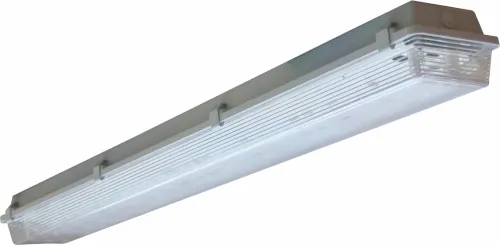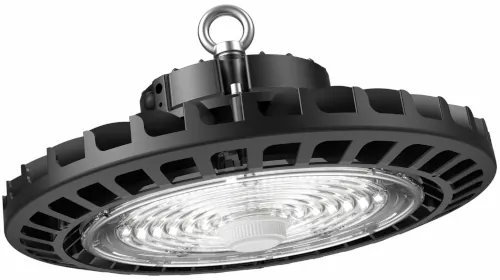Nordland Lighting still shining brightly after 50 years of innovation
Celebrating its 50th anniversary this year, Nordland Lighting is continuing its strong tradition of local innovation by launching its first Zone 2 LED luminaires for mining, oil & gas and petrochemical applications.
The industrial and hazardous lighting specialist is also making these new luminaires available in stainless steel for specific requirements, in addition to launching die-cast aluminium bulkhead Zone 2 LED luminaires.
“There is a definite move towards LED technology in industrial and hazardous lighting, due mainly to the cost-saving and increased safety benefits,” Nordland Lighting Engineering Manager Eben Ferreira comments.
“There has been a dramatic decrease in the cost of LEDs, which means it is better to invest in the latest technology than in cold cathode fluorescent lamp (CCFL) systems, which are anticipated to be phased out completely over the next ten to 15 years,” Ferreira explains.
Lighting-design team
Commenting on what gives Nordland Lighting the leading edge, Sales Manager Johann Lamprecht comments: “We offer good reliable products with an affordable pricing structure. We look after our customers’ needs, ensuring we supply the best suitable product for their direct requirements, all in a highly competitive market.”
The manufacturer also has a dedicated lighting-design team, including a qualified Lighting Practitioner accredited by the Illumination Engineering Society of South Africa (IESSA). “This is one of only a handful of similar experts in South Africa. While anyone can carry out a lighting design, only a registered Lighting Practitioner, with a practice number, can sign off on a particular lighting design.
“It is important that our customers not only realise that we have this resource in-house, but understand that this means our recommendations and findings can be implicitly trusted,” Lamprecht highlights.
Nordland Lighting also offers an applications engineering service, with Ferreira heading up a product development team constantly refining products and looking at introducing the latest innovations to the South African market. “We have decades of expertise across all lighting disciplines, and are therefore able to provide our customers with engineering-based, customised solutions,” Lamprecht stresses.
Applications engineering
Lighting design focuses on factors such as aiming and orientation angles of the specific product, the number and type of luminaires that are best, and the illumination levels achieved within the appropriate standards. “Our experience in applications engineering means we can turnaround lighting designs within a short timeframe and with limited information,” Lamprecht adds.
In addition, the manufacturer works closely with the SABS to ensure that all of its light fittings are not only approved, but comply with the latest specifications and regulations. “Our entire lighting range has retained its permit mark for application in potentially explosively areas since 1977, while our non-hazardous products comply with SANS/IEC 60598, in addition to carrying the Safety Mark,” Ferreira elaborates.
Explaining the distinction between industrial and hazardous lighting applications, he says the latter has distinct categories. These are mainly Zone 1 (explosion-proof areas) and Zone 2 (dust- and ignition-proof areas).
Zone 1 hazardous environments
“It is important to bear in mind that Zone 1 does not necessarily mean that the fitting itself is explosion-proof, but simply that it will not be a contributing factor in the event of any explosion. We even manufacture Zone 1 lighting for underground mining, as well as for non-hazardous areas such as cableways and walkways.”
Industrial lighting, on the other hand, encompasses warehouses and factories, and even specialised applications such as floodlighting, sports lighting, road lighting, prison lighting, and stainless steel products for use in coastal areas, or any other corrosive environments.
Established in 1967, the company has grown from strength to strength, and today is a leading light manufacturer in the industry. “It is a highly competitive market, with a lot of major international players also represented locally, in addition to a plethora of smaller companies also active in the sector,” Lamprecht points out.
All commodity sectors
Nordland Lighting began by importing Zone 1 and Zone 2 hazardous lighting products from Germany, including circuit boards and circuit breakers, before embarking on local manufacture of its own product range. The company was acquired by the Collins Group in 2014, which remains a major shareholder to this day.
Typical applications include all commodity sectors of the mining industry, from gold to platinum, coal and diamonds. In oil & petrochemicals, applications include offshore rigs and even ships for blue chip companies such as De Beers.
Major industrial customers include the likes of cement producer PPC, Sasol, Eskom, and various municipalities in South Africa. Products are even supplied to the agricultural sector, where grain silos are also classified as hazardous areas.
Short lead times
“Quality is of paramount importance to us as an Original Equipment Manufacturer. While we are not the cheapest, there are more costly products out there. We tend to be middle-of-the-road in terms of our pricing strategy. The main reason for our high level of repeat business is our flexibility and reduced lead time, as we are able to supply fittings far faster locally than other companies having to import products,” Lamprecht adds.
In addition to the rapid turnaround time, Nordland Lighting is also able to offer exceptional warranties on all of its products, due to the quality and workmanship. On the high-intensity discharge (HID) lamp side, it gives a standard two-year warranty. In terms of LEDs, this warranty can be as long as ten years, depending on the product.
The local content of Nordland Lighting products is as high as 95%, with specialised components such as ballasts imported from Germany, for example. Some of the LED components are even sourced from China, where Nordland Lighting has a permanent representative to conduct factory visits and monitor product quality. “We are the sole distributor in Africa for various LED lighting manufacturers,” Lamprecht notes.
Latest trends
Commenting on the latest trends in the industrial and hazardous lighting market, Ferreira says the move to LED technology has meant that Nordland Lighting would focus less on the development of new products based on older fluorescent technology. However, older products are not being discontinued as a result, meaning customers can rest assured of being able to obtain older fittings and accessories.
The main attraction of LED technology is that it is much more cost-effective than ever before. In addition, the long-term savings possible are far higher than any other technologies. “The energy savings alone mean that the replacement cost for going the LED route can be recouped in as little as five years,” Ferreira reveals.
LED lamps are also more robust than normal fluorescents. For example, an LED module will not break apart if dropped, unlike glass-tube technology. There is also no need for special anti-vibration lamp holders for conveyor or high-vibration applications, representing a significant cost-saving for the mining industry in particular.
Some of the company’s top products include the following:
- N60 (Zone 1, IP 65) luminaire range featuring specially-designed G13 lamp holders to allow the use of standard bi-pin lamps and electronic control gear, with an optional isolating switch.
- MiniLite LED vapour-proof luminaires for underground and surface areas such as walkways and conveyor belts, roadways and washbays. The rated life expectancy is 50 000 hours (15 W, 110 LEDs).
- JBP luminaires for hazardous areas, featuring a GRP body and polycarbonate injection moulded lens with linear prism and stainless steel clips.
Looking to the future, Lamprecht says Nordland Lighting will continue to focus on new product development, and assisting its customers with implementing the best solutions available for their specialised requirements.






